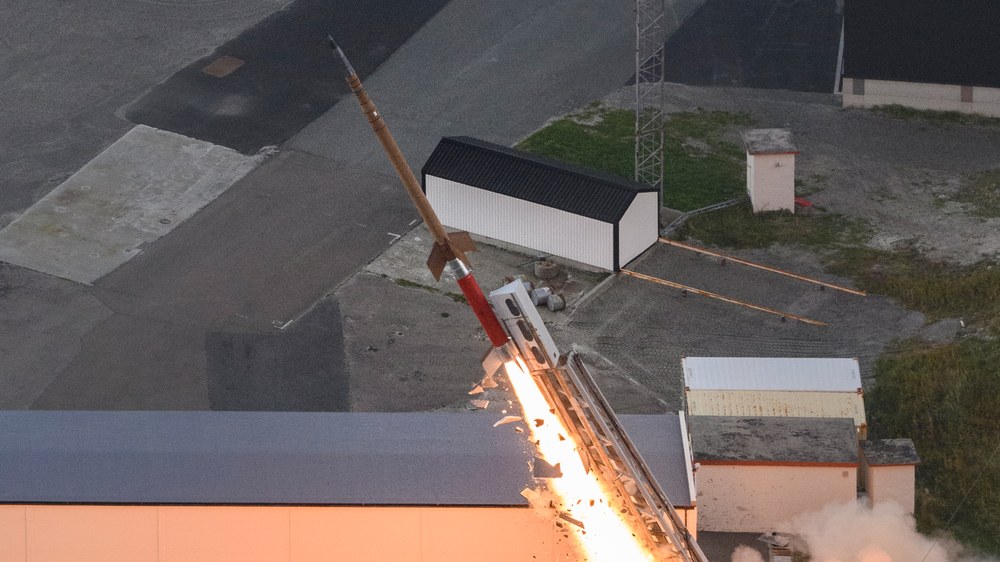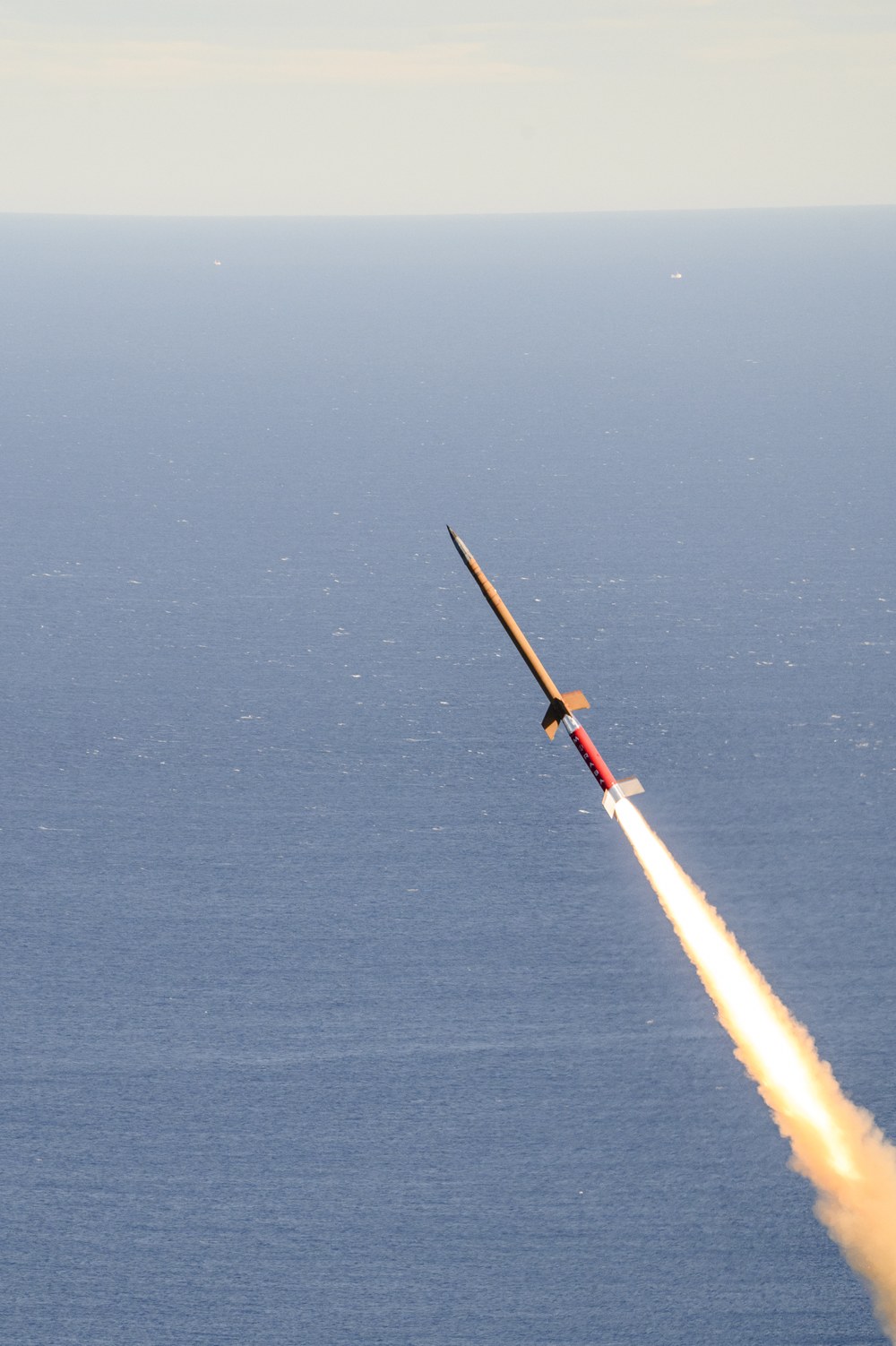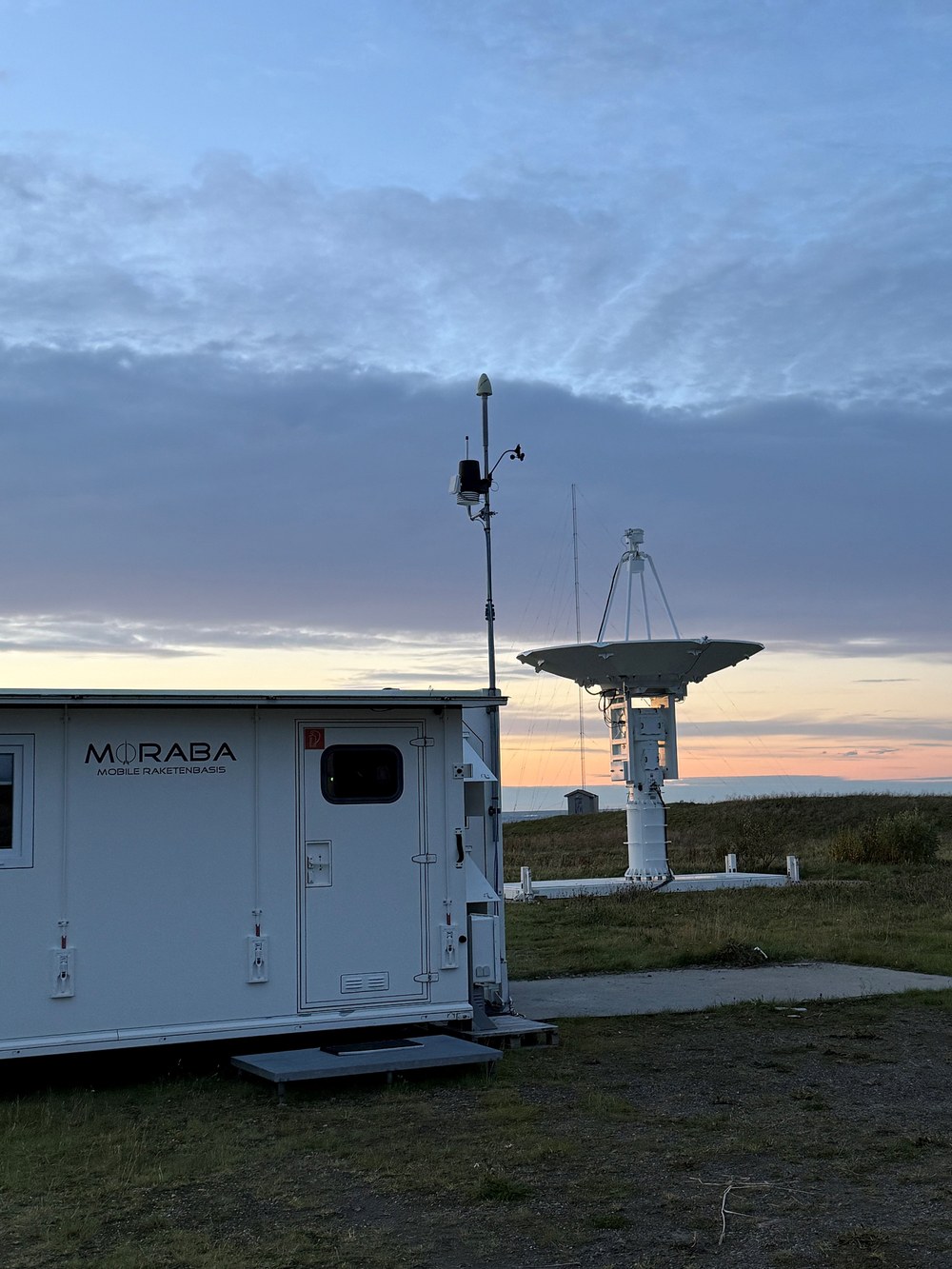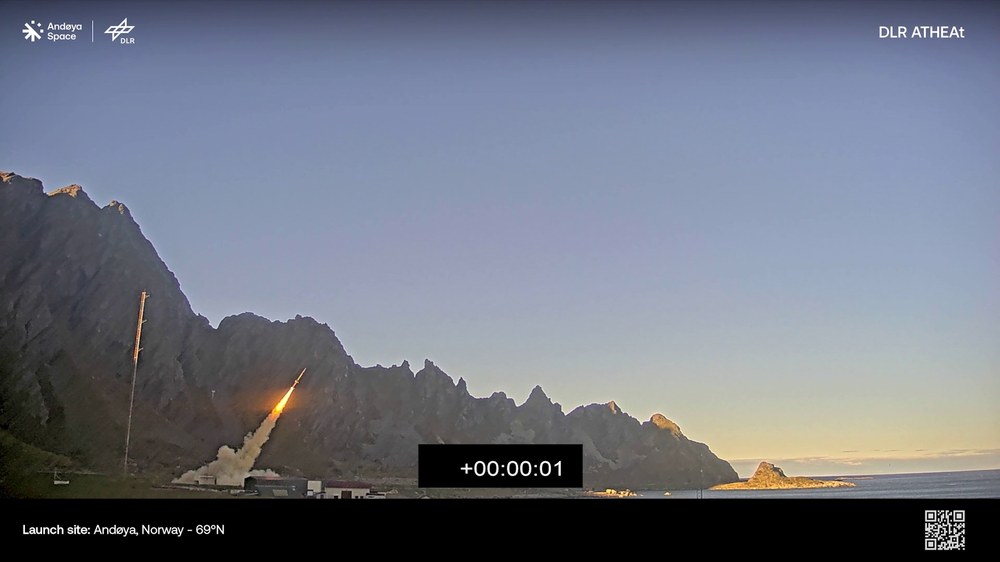ATHEAt flight experiment successfully launched



The DLR flight experiment ATHEAt was successfully launched on 6 October 2025 on board a sounding rocket from the Andøya Space launch site in northern Norway.- The focus of the experiment was to test heat-resistant components made of fibre-reinforced ceramics and innovative sensor technologies.
- More than 300 sensors on board the flight experiment recorded comprehensive datasets and transmitted them to ground stations.
- This data makes an important contribution to the development of future-oriented, reusable components for space transportation vehicles.
- Focus: Space, reusable space transportation systems, sounding rockets
In the future, an increasing number of components in space transportation systems are set to be reusable – that is, they can used several times, making them more cost effective. As such, the German Aerospace Center (Deutsches Zentrum für Luft- und Raumfahrt; DLR) is developing the necessary reusability technologies and testing them using sounding rockets. On 6 October 2025 at 10:45 local time, the ATHEAt flight experiment successfully took off from its launch site on the island of Andøya in northern Norway. Over the sea, the experiment flew for a total of approximately four minutes, including two minutes of high-speed flight with the peak speed exceeding Mach 9. This range is particularly interesting: at such high speeds, the vehicle experiences gas temperatures exceeding 2000 degrees Celsius and extreme aerothermal loads act on its materials and structures – similar to those encountered by spacecraft re-entering Earth's atmosphere. During the flight the research rocket reached a maximum altitude of more than 30 kilometres. Comprehensive measurement data was successfully transmitted to the DLR and Andøya Space ground stations.
A treasure trove of data for technology development
"With the ATHEAt flight experiment, we have succeeded in flying at high Mach numbers for much longer than in our previous projects," summarises Ali Gülhan, ATHEAt project manager and head of the Supersonic and Hypersonic Technologies Department at the DLR Institute of Aerodynamics and Flow Technology. "We have now reached a new milestone and collected unique data for further research and development." This data harvest was made possible by the more than 300 sensors installed by the DLR team into the flight experiment. Also on board were miniaturised, non-contact sensors such as infrared cameras, laser scanners and radiation thermometers. A modular data acquisition system developed by DLR recorded the measurements and transmitted the processed data by radio to ground stations below.
Extreme stress test for structures, cooling experiments and flaps
The DLR team installed the payload in the front section of the rocket, housing the scientific experiments and the service module for measurements, the power supply and data transmission. The shimmering grey nose cone is largely made from a special fibre-reinforced ceramic manufactured entirely at DLR using specially developed in-house processes. This high-performance material not only withstands very high temperatures, but it is also mechanically very strong and relatively lightweight. The scientific payload onboard the ATHEAt flight included two cooling experiments, which researchers used to investigate how the extreme high temperatures at the nose of the rocket can be managed through active cooling.
Also new on the ATHEAt flight experiment's front body were four movable flaps – also made of DLR's fibre-reinforced ceramic – which were successfully deployed during the flight and experienced very high temperatures. In the future, such flaps could be used to make space transportation vehicles more controllable.

Video: Launch of DLR research rocket with ATHEAt flight experiment
Your consent to the storage of data ('cookies') is required for the playback of this video on Quickchannel.com. You can view and change your current data storage settings at any time under privacy.
Andøya Space
"The conditions simulated in the ATHEAt flight experiment are comparable to those that heat protection systems on future reusable space transport systems will have to reliably withstand during re-entry into Earth's atmosphere," explains Gülhan. The re-entry phase, with its extreme aerodynamic and aerothermodynamic conditions, is also a crucial point of development for the space industry: "With projects like ATHEAt, we are specifically working on closing this global technology gap." To this end, DLR combines flight experiments like ATHEAt and its predecessor projects – supported and continuously refined with sophisticated simulations, design processes and component testing on the ground. This approach is a core element of DLR's space research strategy and, together with its many years of expertise in the field, is recognised worldwide.
Successfully launched – the 13.5 metre, two-staged ATHEAt flight experiment
For the planning and execution of missions such as the ATHEAt flight experiment, DLR has its own dedicated facility: the Mobile Rocket Base (MORABA). The team there plans, supports, and launches suborbital sounding rockets, drawing on several decades of experience. For launches in northern Norway, DLR collaborates with the Andøya Space launch site. For ATHEAt, a newly developed two-stage configuration from MORABA was used. The first, lower propulsion stage – RED KITE – is a joint development from DLR and the company Bayern-Chemie. Hidden under RED KITE's fairing lies a particularly powerful solid-fuel propulsion system. The second stage uses a Canadian 'Black Brant' rocket motor. This propulsion combination is especially well suited for microgravity and hypersonic research. With the scientific payload mounted at the top, the research rocket for the ATHEAt project measured approximately 13.5 metres.
To achieve the highest possible temperatures, the research rocket flew along a specially planned, shallower trajectory, enabling it to fly at high Mach numbers for an extended period at relatively low altitudes. A newly developed DLR sensor network provided essential data to determine the precise moment of ignition for the second stage. This 'sensor cube' uses a defined starting position and measures the acceleration and rotation rates in flight to calculate the position of the rocket in space. At the end of its flight, it splashed down safely in a designated and secure area of the Norwegian Sea.
Related links
- DLR blogpost: ATHEAt flight experiment – on the road to Norway for next generation of space transport, part 1
- DLR blogpost: ATHEAt flight experiment – on the road to Norway for next generation of space transport, part 2
- DLR ATHEAt project – advanced technologies for high-energetic atmospheric flights for reusable space transportation systems
- DLR Institute of Aerodaynamics and Flow Technology
- DLR Institute of Structures and Design
- DLR Institute of Software Technology
- DLR Space Operations and Astronaut Training
- Mobile Rocket Base (MORABA)
- Andøya Space
